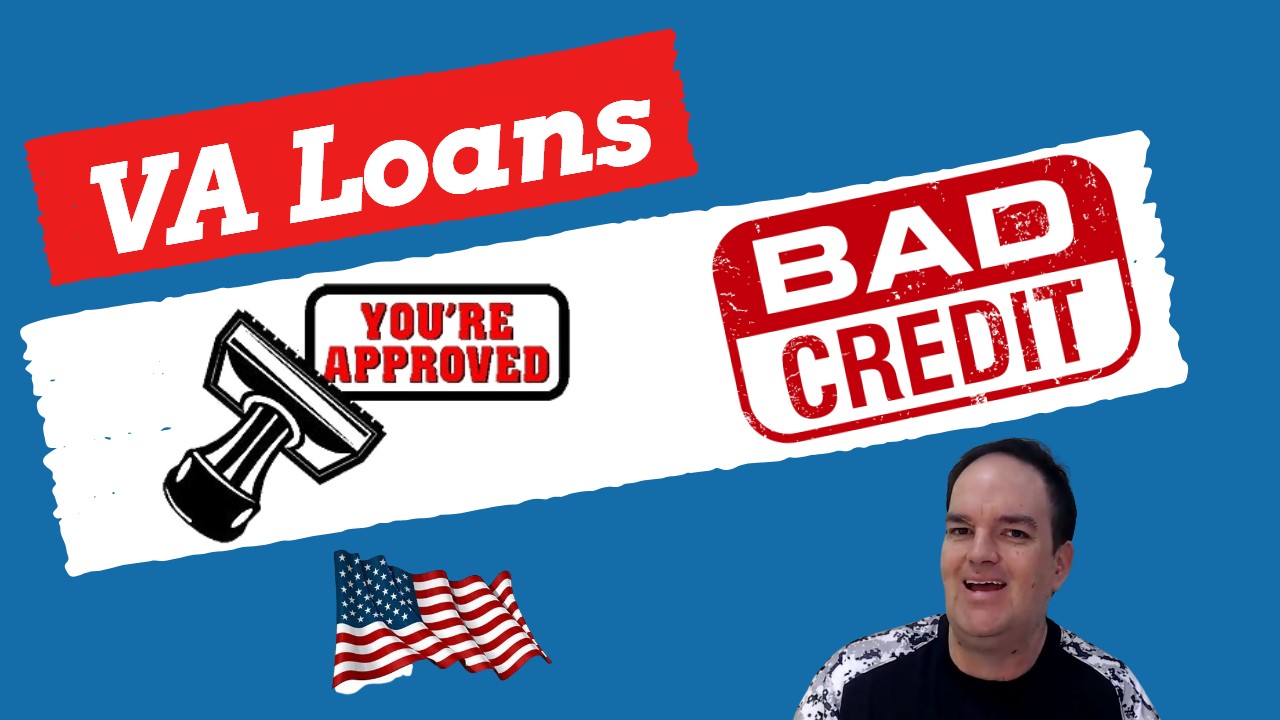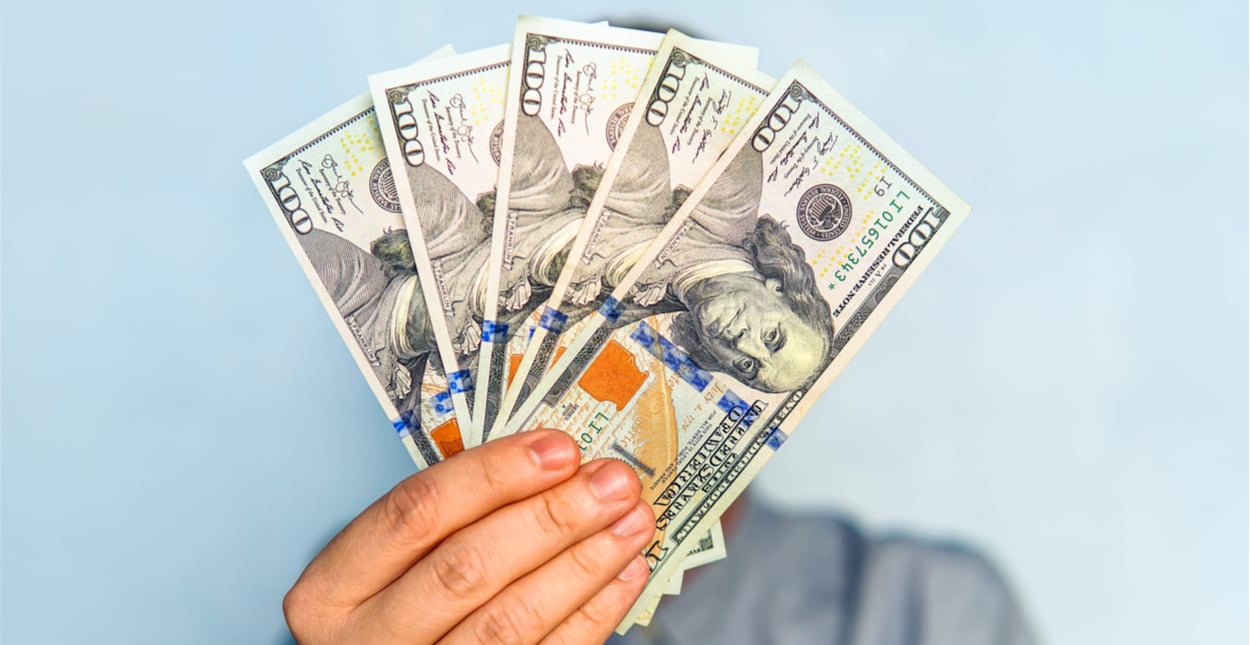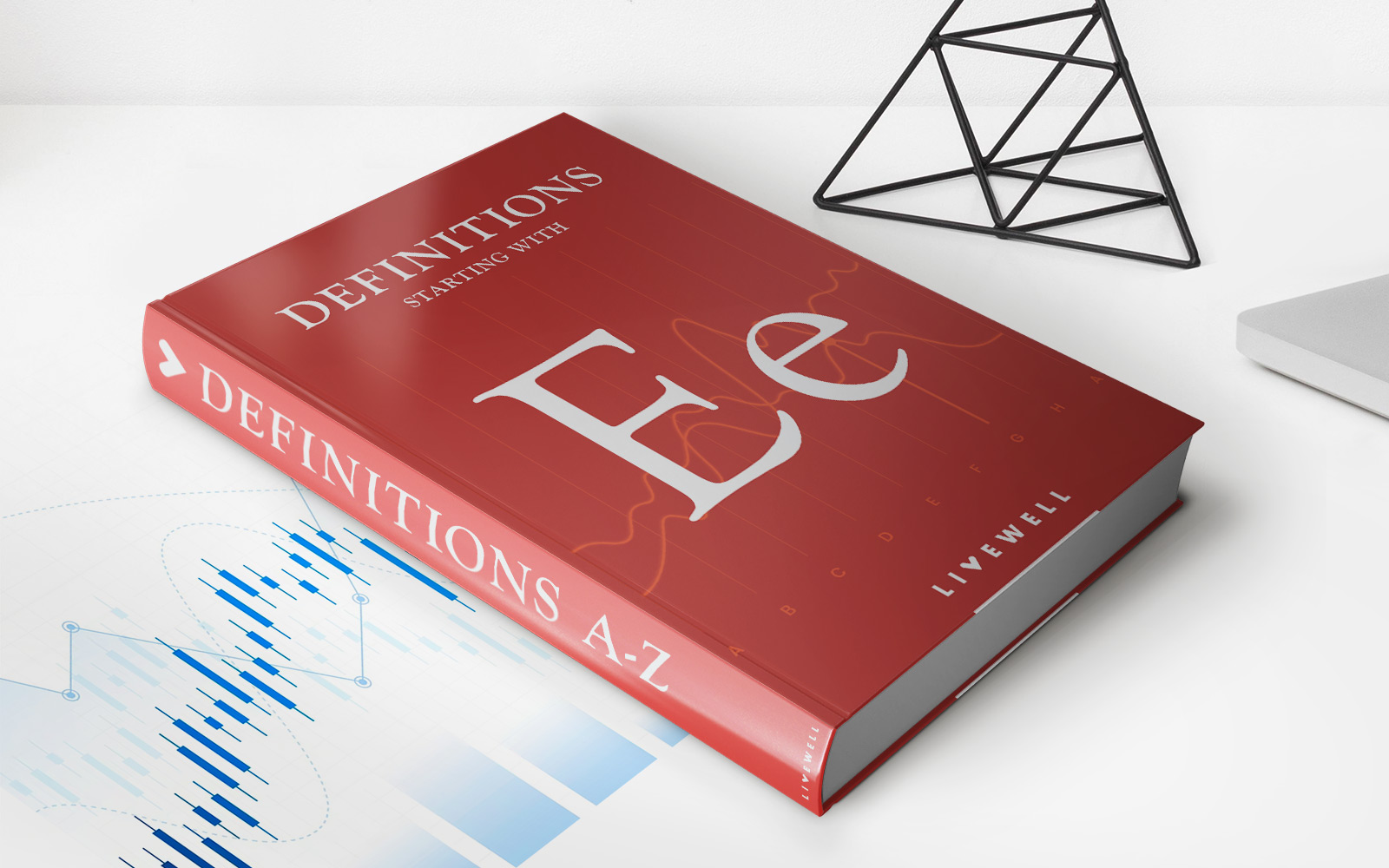

Finance
How To Get A $2000 Loan With Bad Credit
Modified: February 21, 2024
Looking for financial assistance? Learn how you can obtain a $2000 loan even with bad credit through our expert finance tips and advice.
(Many of the links in this article redirect to a specific reviewed product. Your purchase of these products through affiliate links helps to generate commission for LiveWell, at no extra cost. Learn more)
Table of Contents
Introduction
Having bad credit can be a major obstacle when you need to borrow money. Traditional lenders, such as banks and credit unions, often rely heavily on credit scores to determine loan eligibility. If your credit score is low, you may find it challenging to secure a loan. However, all hope is not lost. There are still options available for obtaining a loan even with bad credit.
When faced with an urgent financial need, a $2000 loan can provide much-needed relief. Whether it’s for unexpected medical expenses, home repairs, or debt consolidation, a loan can help bridge the gap and provide some financial breathing room. In this article, we will explore how to get a $2000 loan with bad credit and what options are available to borrowers.
Before we dive into the different ways to apply for a loan, it’s essential to understand what bad credit means. Bad credit refers to a low credit score resulting from missed payments, high credit utilization, or past bankruptcy. A low credit score can make it difficult to qualify for traditional loans, as lenders perceive borrowers with bad credit as high-risk individuals.
Fortunately, there are alternative lenders who specialize in providing loans to individuals with bad credit. These lenders take a more holistic approach to evaluating loan applications, taking factors like income, employment history, and repayment ability into account. By considering these alternative lenders, you increase your chances of approval despite having bad credit.
When seeking a $2000 loan with bad credit, it’s important to understand the different types of loans available. Lenders may offer secured or unsecured loans, each with its own set of requirements and terms. Secured loans require collateral, such as a car or property, while unsecured loans do not require collateral but may have higher interest rates and stricter eligibility criteria.
Improving your chances of approval for a $2000 loan with bad credit requires careful research and preparation. Before applying, it’s important to review your credit report and address any errors or discrepancies. Additionally, taking steps to improve your credit score, such as paying bills on time and reducing credit card balances, can significantly enhance your loan eligibility.
In the next sections, we’ll explore different lenders and loan options available to individuals with bad credit. We’ll also provide tips on how to navigate the application process and understand the terms and conditions of your loan. Finally, we’ll discuss various repayment strategies to help you manage your loan successfully.
Securing a $2000 loan with bad credit is not impossible. Understanding the options available and being proactive can significantly increase your chances of approval. So, let’s dive in and explore how to get the loan you need, even with bad credit.
Understanding Bad Credit
Before delving into the specifics of obtaining a $2000 loan with bad credit, it is crucial to understand what bad credit means and how it can affect your financial prospects. Bad credit refers to a low credit score that is typically caused by past financial mismanagement, such as missed payments, defaults, or high levels of debt.
Your credit score is a numerical representation of your creditworthiness, with a higher score indicating a lower risk for lenders. It is calculated based on various factors, including your payment history, the amount of debt you owe, the length of your credit history, and the types of credit you have used. A low credit score can make it challenging to obtain loans, credit cards, or favorable interest rates.
When lenders review loan applications, they often consider credit scores as a measure of an individual’s ability to repay the loan on time. Borrowers with bad credit are perceived as higher-risk borrowers because of their past financial difficulties.
Having bad credit can limit your financial options and lead to several challenges. Traditional lenders, such as banks and credit unions, are more likely to reject loan applications from individuals with bad credit. Even if they are willing to extend credit, it may come with unfavorable terms, higher interest rates, or stricter repayment requirements.
Furthermore, bad credit can affect other aspects of your financial life. It can hinder your ability to rent an apartment, obtain insurance coverage, or even secure employment. Landlords, insurance companies, and potential employers often review credit reports as part of their application processes, using credit history as an indicator of responsibility and trustworthiness.
However, it’s important to remember that bad credit is not a permanent situation. With some effort and strategic financial planning, you can improve your creditworthiness over time. This will not only increase your chances of obtaining loans in the future but can also lead to better interest rates, more favorable terms, and increased financial opportunities.
In the next sections, we will explore different options for securing a $2000 loan, even with bad credit. Understanding the lending landscape and being aware of the alternatives available to you will empower you to make informed decisions and ensure you find the best loan option that meets your needs.
Researching Your Options
When it comes to obtaining a $2000 loan with bad credit, conducting thorough research is essential. By exploring different options and understanding what each lender offers, you can make an informed decision that aligns with your financial needs and goals.
Start by considering alternative lenders that specialize in providing loans to individuals with bad credit. These lenders may have more flexible eligibility criteria and consider factors beyond just your credit score.
Online lenders are a popular choice for borrowers with bad credit as they often have streamlined application processes and quicker approval times. These lenders operate entirely online, allowing you to complete the application from the comfort of your own home. However, it is important to carefully review the lender’s reputation, terms, and interest rates before proceeding.
Peer-to-peer lending platforms are another option worth exploring. These platforms connect borrowers directly with individual lenders and may offer more competitive rates compared to traditional financial institutions. However, keep in mind that approval on these platforms is still subject to the lender’s evaluation of your creditworthiness.
In addition to alternative lenders, credit unions can be a viable choice for borrowers with bad credit. Credit unions are not-for-profit organizations that often have more favorable terms and lower interest rates compared to banks. If you have a membership with a credit union or are eligible to join one, consider exploring their loan options.
You may also want to check with local community banks. These smaller financial institutions may have a more personal approach to lending and may be willing to work with individuals with less-than-perfect credit.
As you research your options, pay attention to the lender’s reputation and customer reviews. Look for information regarding their loan terms, interest rates, repayment options, and any hidden fees. It’s also important to verify the lender’s legitimacy and ensure they are licensed and registered to operate in your state.
Comparing interest rates is crucial to understand the overall cost of the loan. A slightly lower interest rate can save you a significant amount of money over the course of the loan repayment period. Use online loan comparison tools to easily compare interest rates and terms across different lenders.
Furthermore, be cautious of predatory lenders who may try to take advantage of individuals with bad credit. Watch out for excessive fees, high-interest rates, and unrealistic loan terms. If a lender promises guaranteed approval or asks for upfront fees, it’s a red flag. Legitimate lenders do not require upfront payment to process a loan application.
In summary, thoroughly researching your options is vital when seeking a $2000 loan with bad credit. Consider alternative lenders, such as online lenders and credit unions, and pay attention to loan terms, interest rates, and customer reviews. By doing your due diligence, you can find a reputable lender that offers favorable terms and helps you meet your financial needs.
Alternative Lenders for Bad Credit Loans
When traditional lenders turn you down due to bad credit, alternative lenders provide a ray of hope. These lenders specialize in offering loans to individuals with less-than-perfect credit scores. They take into account factors beyond credit history, such as income, employment stability, and overall financial situation.
One popular alternative lending option is online lenders. These lenders operate exclusively online and offer a streamlined application process, quick approval times, and funds deposited directly into your bank account. Online lenders often have more lenient eligibility criteria and may consider borrowers with bad credit.
Peer-to-peer lending platforms are another option worth considering. These platforms connect borrowers with individual lenders who are willing to fund loans. Peer-to-peer lending can offer more competitive interest rates compared to traditional lenders, as the platform cuts out the need for intermediaries such as banks.
Credit unions also serve as alternative lenders for bad credit loans. These not-for-profit organizations are member-owned and focus on supporting their members’ financial needs. Credit unions often have more flexible lending criteria and may offer better terms and interest rates compared to traditional banks.
It’s important to note that alternative lenders may still have specific requirements and policies in place. While they may be more flexible with credit scores, other factors such as income, employment history, and debt-to-income ratio will be evaluated.
As you explore alternative lenders, be sure to research their reputation and customer reviews. Look for lenders that are reputable, licensed, and registered to operate in your state. Additionally, pay attention to any hidden fees, high-interest rates, or predatory lending practices. Reading customer testimonials and reviews can help you gauge the lender’s reliability and customer service.
Before committing to a loan, carefully review and compare the terms and conditions of different lenders. Pay attention to the interest rates, repayment terms, and any fees associated with the loan. Some lenders may charge origination fees or prepayment penalties, so it’s crucial to understand the full cost of borrowing.
Remember, alternative lenders provide an opportunity for individuals with bad credit to obtain the funds they need. However, it’s essential to borrow responsibly and ensure that you can comfortably repay the loan according to the agreed-upon terms. Taking on a loan that you cannot afford can further worsen your financial situation.
In summary, alternative lenders offer options for bad credit loans when traditional lenders may not be accessible. Online lenders, peer-to-peer lending platforms, and credit unions are among the alternative lending options to explore. Do your due diligence, compare terms and interest rates, and select a reputable lender that best suits your financial needs.
Secured vs. Unsecured Loans
When seeking a $2000 loan with bad credit, understanding the difference between secured and unsecured loans is essential. Both types of loans have their own advantages and considerations, and knowing which option is more suitable for your circumstances can help you make an informed decision.
A secured loan requires collateral, such as a car, home, or other valuable asset, to secure the loan. The collateral provides the lender with a form of security in case the borrower defaults on the loan. In the event of default, the lender has the right to seize and sell the collateral to recoup their losses.
One significant advantage of a secured loan is that it offers lower interest rates compared to unsecured loans. Lenders view secured loans as less risky because they have collateral as a guarantee. The collateral serves as an assurance that the borrower will repay the loan.
However, securing a loan with collateral also comes with risks. If you fail to make timely payments or default on the loan, you risk losing the collateral. It’s crucial to carefully consider the consequences of defaulting and assess if you are comfortable with the potential loss of the secured asset.
On the other hand, an unsecured loan does not require collateral to secure the loan. Unsecured loans are typically based on the borrower’s creditworthiness, income, and employment history. These loans are riskier for lenders, as they have no collateral to fall back on if the borrower defaults.
Due to the higher risk involved, unsecured loans may have higher interest rates compared to secured loans. Lenders compensate for the lack of collateral by charging higher interest rates and implementing stricter eligibility requirements.
Another consideration with unsecured loans is the maximum loan amount available. Since there is no collateral to secure the loan, lenders may be more cautious in lending larger amounts. With a $2000 loan, it falls within the range that can be obtained as an unsecured loan, especially for borrowers with bad credit.
When deciding between a secured and unsecured loan, consider your financial situation, risk tolerance, and the loan terms offered by lenders. If you have valuable assets that you can use as collateral and are comfortable taking on the risk, a secured loan may offer lower interest rates and more flexible terms.
However, if you don’t have collateral or are unwilling to put your assets at risk, an unsecured loan may be the better option, even with higher interest rates. Remember to carefully review the terms and conditions of the loan, including interest rates, repayment periods, and any associated fees.
In summary, secured loans require collateral and offer lower interest rates, while unsecured loans do not require collateral but may have higher interest rates. Assess your risk tolerance and financial circumstances to determine which loan type is the most suitable for your needs.
How to Improve Your Chances of Approval
When applying for a $2000 loan with bad credit, there are steps you can take to improve your chances of approval. While lenders may have more lenient criteria for borrowers with bad credit, showcasing your financial responsibility and ability to repay the loan can significantly increase your likelihood of securing the loan.
Here are some strategies to improve your chances of approval:
- Review and improve your credit: Start by obtaining a copy of your credit report and reviewing it for any errors or discrepancies. Dispute any inaccurate information and ensure the report reflects your current financial situation. Additionally, work on improving your credit by making timely payments, reducing credit card balances, and avoiding new credit applications.
- Show stable income: Lenders want to see that you have a stable source of income to make loan repayments. Provide proof of income, such as pay stubs, tax returns, or bank statements, to demonstrate your ability to meet the financial obligations of the loan.
- Keep debt-to-income ratio in check: Lenders assess your debt-to-income ratio to determine your ability to handle additional debt. Lowering your existing debt and keeping your debt-to-income ratio below 40% can improve your loan eligibility.
- Consider a co-signer: If you have trouble qualifying for a loan on your own, having a co-signer with good credit can increase your chances of approval. A co-signer is someone who agrees to take responsibility for the loan if you default. However, keep in mind that the co-signer is equally responsible for loan repayments.
- Prepare a strong loan application: Take the time to prepare a comprehensive loan application to showcase your financial stability and capacity to repay the loan. Provide accurate and detailed information about your employment, income, expenses, and any additional assets you may have.
- Shop around and compare lenders: Don’t settle for the first lender you come across. Shop around and compare loan terms, interest rates, and fees from different lenders. Consider alternative lenders, credit unions, and online lenders that specialize in bad credit loans. Comparing offers allows you to find the best loan option that matches your needs and reduces the risk of predatory lending practices.
By implementing these strategies, you can enhance your chances of loan approval even with bad credit. It’s important to note that improving your financial situation takes time and effort. Start working on these strategies well in advance of applying for the loan to maximize your chances of success.
However, it’s crucial to only borrow the amount you genuinely need and can comfortably repay. Taking on more debt than you can handle can worsen your financial situation and make it challenging to meet your repayment obligations.
Now that you have a better understanding of how to improve your chances of approval, let’s move on to the next section to learn more about the process of applying for a $2000 loan with bad credit.
Applying for a $2000 Loan with Bad Credit
When it comes to applying for a $2000 loan with bad credit, it’s important to be prepared and organized. Taking the time to gather the necessary documentation and present a strong application can improve your chances of approval. Here’s a step-by-step guide to help you through the loan application process:
- Review your credit report: Start by obtaining a copy of your credit report and reviewing it for any errors or discrepancies. Correct any inaccuracies before submitting your loan application.
- Research lenders: Explore different lenders, including banks, credit unions, and online lenders that specialize in bad credit loans. Compare interest rates, loan terms, and reputation to find the lender that best suits your needs.
- Gather necessary documentation: Lenders will require documentation to evaluate your loan application. Common documents include proof of income (pay stubs, tax returns), bank statements, identification documents, and proof of address. Organize these documents to speed up the application process.
- Submit the application: Fill out the loan application form accurately, providing all the required information. Double-check for any errors or missing details before submitting the application. Some lenders may offer online applications for convenience.
- Be prepared for additional information: Lenders may request further information or documentation to assess your loan eligibility. Stay responsive and provide any requested documents promptly to avoid delays in the approval process.
- Consider a co-signer: If you are struggling to qualify for the loan due to bad credit, consider asking someone with good credit to co-sign the loan. A co-signer with a strong credit history can increase your chances of approval.
- Review the loan terms: Once you receive loan offers, carefully review and compare the terms and conditions. Pay attention to interest rates, repayment duration, any fees associated with the loan, and potential penalties for early repayment.
- Accept the loan offer: If you are satisfied with the loan terms, accept the loan offer. Make sure you understand the repayment schedule and your obligations as a borrower.
- Repay the loan: Once you receive the loan funds, make timely repayments according to the agreed-upon schedule. Paying on time not only helps you build a positive payment history but also improves your credit score over time.
Remember, it’s crucial to borrow responsibly and only take on a loan amount that you can comfortably afford to repay. Taking on more debt than you can handle can further strain your financial situation.
Additionally, be cautious of predatory lenders who may target individuals with bad credit. If a lender guarantees approval or asks for upfront fees, it’s a warning sign. Legitimate lenders evaluate loan applications and may charge reasonable fees, but they will not guarantee approval without assessing your financial situation.
By following these steps, you can navigate the loan application process and increase your chances of obtaining a $2000 loan, even with bad credit. It’s important to remain proactive, do your due diligence, and select a reputable lender that offers fair loan terms.
Understanding the Terms and Conditions
Before finalizing your $2000 loan with bad credit, it’s crucial to thoroughly understand the terms and conditions of the loan. This will help you make an informed decision and ensure that you can meet the repayment obligations. Here are the key aspects to consider:
- Interest rates: Review the interest rate carefully. Understand whether it is a fixed rate or variable rate and how it will impact your monthly payments. A higher interest rate can significantly increase the overall cost of the loan.
- Repayment schedule: Examine the repayment schedule to understand the duration of the loan, the number of monthly installments, and the total repayment amount. Make sure it aligns with your financial capabilities and fits within your budget.
- Penalties and fees: Read the terms regarding late payment penalties, early repayment fees, or any other charges associated with the loan. Be aware of potential fees that may be incurred if you fail to meet the loan obligations or if you want to repay the loan ahead of schedule.
- Collateral: If the loan is secured, understand the terms regarding the collateral. Know what happens if you default on the loan and the lender needs to seize and sell the collateral to recover their losses.
- Loan amount and purpose: Ensure that the loan amount and purpose align with your needs. Verify that the loan amount is indeed $2000 and that the funds will be used for the intended purpose.
- Grace period: Some lenders may provide a grace period before the first repayment is due. Understand the duration of the grace period and whether any interest will accrue during this time.
- Prepayment options: If you plan to repay the loan earlier than the agreed-upon term, check whether there are any prepayment penalties or restrictions. Ideally, look for a loan that allows early repayment without additional charges.
- Default consequences: Familiarize yourself with the consequences of defaulting on the loan. Understand the actions the lender may take, such as reporting to credit bureaus, pursuing legal measures, or engaging debt collectors.
To ensure you fully comprehend the terms and conditions, don’t hesitate to ask the lender questions or seek clarification on any areas of concern. It’s important to have a clear understanding of the loan agreement before signing.
Reviewing and understanding the terms and conditions helps you avoid any surprises during the repayment period and ensures that you can fulfill your financial obligations without facing unnecessary penalties or fees.
If you encounter any terms or clauses that are unclear or confusing, consider consulting with a financial advisor or seeking legal advice. Their expertise can provide you with guidance and ensure that you make an informed decision.
By thoroughly understanding the terms and conditions of your $2000 loan, you can enter into the agreement with confidence, knowing your rights, responsibilities, and the implications of borrowing with bad credit.
Repayment Strategies for Bad Credit Loans
When it comes to repaying a $2000 loan with bad credit, it’s essential to have a solid repayment strategy in place. Managing your loan repayments responsibly not only helps you meet your financial obligations but also improves your credit score over time. Here are some repayment strategies to consider:
- Create a budget: Start by creating a budget that reflects your income and expenses. Allocate a portion of your income specifically for loan repayment. By tracking your expenses and managing your finances diligently, you can ensure that you have sufficient funds to cover your monthly loan payments.
- Pay on time: Make your loan payments on time to avoid late payment fees and additional interest charges. Consider setting up automatic payments or calendar reminders to ensure you don’t miss any due dates. Consistently making timely payments demonstrates good financial behavior and can positively impact your credit score.
- Prioritize your debt: If you have other outstanding debts, prioritize them by interest rate and payment terms. Focus on paying off high-interest debt first while meeting the minimum payments on other obligations. Once you’ve tackled high-interest debt, allocate more funds towards your $2000 loan to pay it off sooner.
- Consider debt consolidation: If you have multiple debts with high-interest rates, exploring debt consolidation may be a viable option. Debt consolidation involves combining multiple debts into a single loan with a lower interest rate. This can simplify your repayment process and potentially reduce the overall cost of your debt.
- Make extra payments: If your financial situation allows, consider making extra payments towards your loan. By paying more than the minimum required amount each month, you can pay off the loan faster and reduce the total interest paid over the life of the loan.
- Explore repayment assistance programs: Depending on your financial circumstances, there may be repayment assistance programs available to help alleviate the burden of loan repayment. Some lenders offer hardship programs or flexible repayment options. Contact your lender to inquire about any available assistance programs.
- Communicate with your lender: If you encounter any financial hardships that may prevent you from making timely loan payments, it’s important to communicate with your lender. Lenders may be willing to work with you by modifying the repayment plan or offering temporary forbearance options. Open communication can help you avoid defaulting on the loan and damaging your credit further.
- Monitor your credit: Regularly monitor your credit report to ensure that the loan payments are being accurately reported. Any errors or discrepancies should be addressed promptly with the credit bureaus. Keeping an eye on your credit report allows you to track your progress and identify areas for improvement.
Implementing these repayment strategies will help you stay on top of your $2000 loan and successfully repay it. Developing good financial habits and managing your debt responsibly can lead to improved credit and better borrowing opportunities in the future.
Remember, consistency and discipline are key when it comes to loan repayment. By sticking to your repayment plan and practicing responsible financial habits, you can successfully repay your bad credit loan and pave the way towards a healthier financial future.
Conclusion
Obtaining a $2000 loan with bad credit may initially seem challenging, but with the right approach and understanding of your options, it is indeed possible. By exploring alternative lenders, improving your creditworthiness, and applying smart repayment strategies, you can overcome the hurdles associated with bad credit and secure the loan you need.
Understanding your credit situation is the first step towards finding a suitable loan. Bad credit does not have to be a permanent barrier, as alternative lenders are available that consider factors beyond just credit scores. These lenders assess your overall financial picture, including income, employment stability, and repayment ability. Researching these lenders and comparing their terms and reputation will help you make an informed decision.
By improving your chances of approval through strategies such as reviewing your credit, demonstrating stable income, and maintaining a manageable debt-to-income ratio, you can enhance your eligibility for the loan. Additionally, considering a co-signer and preparing a strong loan application further increases your likelihood of approval.
Understanding the terms and conditions of the loan is crucial to avoid surprises and ensure that you can comfortably meet your repayment obligations. Carefully evaluating interest rates, repayment schedules, and penalties will set realistic expectations and help you budget your finances accordingly.
With a solid repayment strategy in place, you can responsibly manage your loan repayments. Creating a budget, paying on time, considering debt consolidation, and making extra payments all contribute to successfully repaying the loan. Open communication with your lender and monitoring your credit report also play vital roles in ensuring a smooth repayment process.
Remember, obtaining a loan with bad credit is not a quick fix, but it can be a stepping stone towards rebuilding your credit and regaining financial stability. By borrowing responsibly and repaying your loan diligently, you can improve your credit over time and open up better borrowing opportunities in the future.
Now armed with knowledge and understanding, take the necessary steps to secure your $2000 loan with bad credit and move forward with confidence. Stay committed to your financial goals and maintain a proactive approach towards managing your finances. With determination and perseverance, you can overcome the challenges of bad credit and set yourself on a path towards a brighter financial future.














